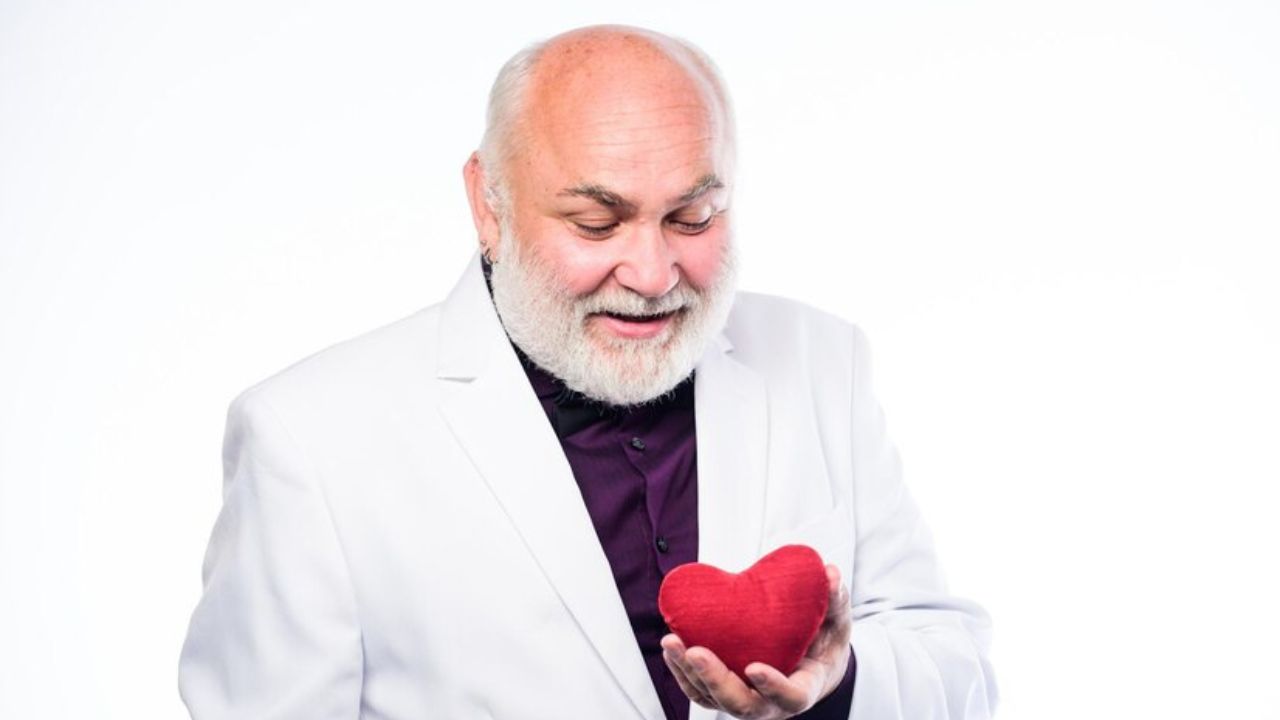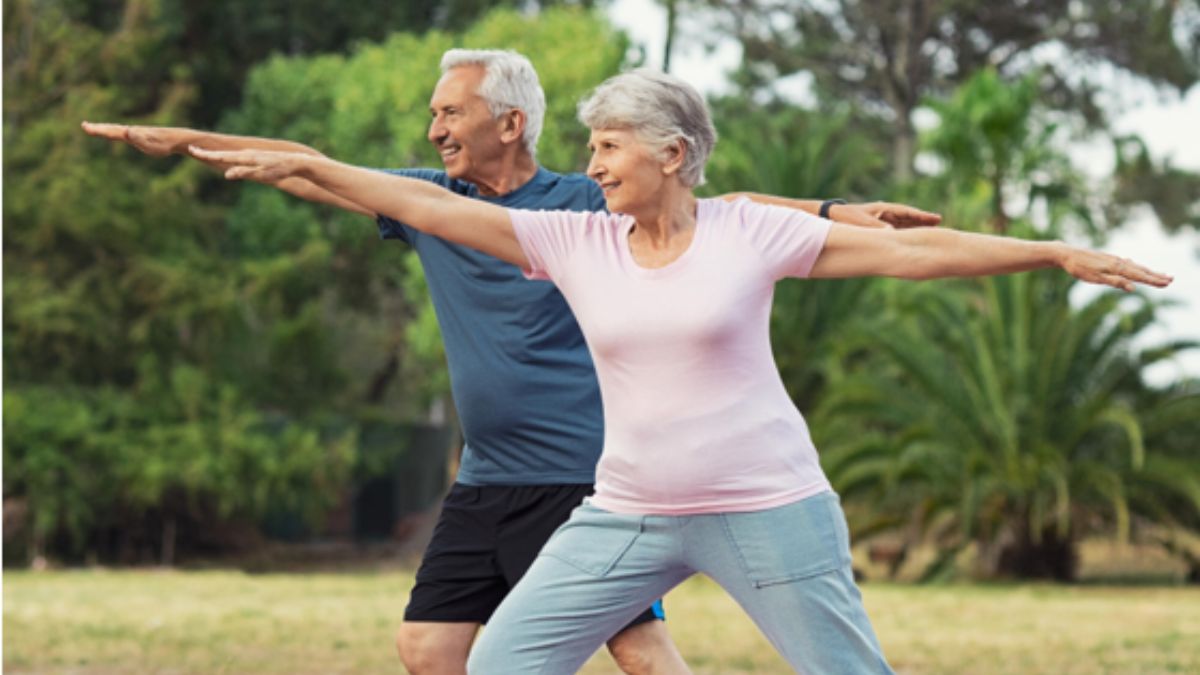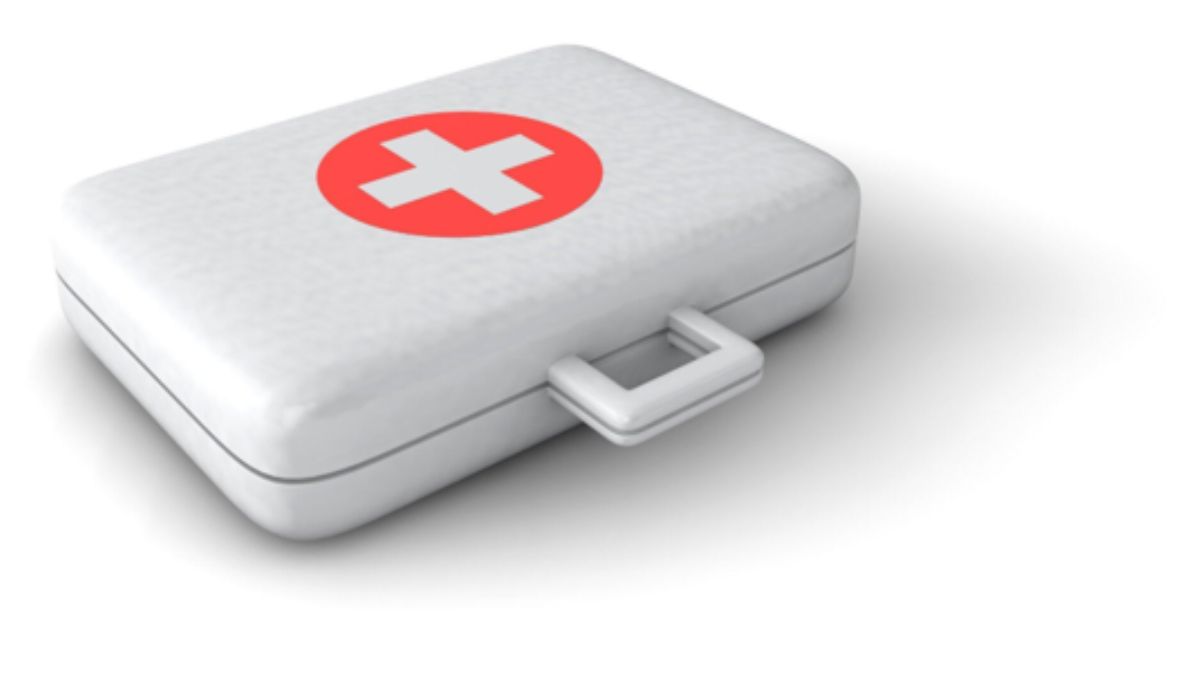HEALTH
James Roday Heart Attack: What We Can Learn About Heart Health

It’s not every day we hear about beloved actors facing life-altering health events. When James Roday Heart Attack known for his sharp wit and charm on Psych, opened up about his heart attack and subsequent life changes, it struck a chord with fans around the world. Many were left wondering how this could happen to someone who seemed so full of life and vitality.
Beyond the shock and sadness, James’s story offers an important lesson on heart health. It’s a wake-up call that heart disease doesn’t discriminate—it can impact anyone, anytime. Whether you’re a devoted fan or someone simply looking for better wellness habits, there’s plenty we can learn from his experience.
From understanding the risks to adopting healthier practices, this blog unpacks the key takeaways from James Roday’s heart scare, with actionable insights to help you prioritize your own heart health.
A Wake-Up Call That Touched Millions
When James Roday Heart Attack spoke openly about his heart attack, the conversation shifted from his Hollywood career to his humbling health battle. At just 40 years old, he was faced with a health crisis often associated with older individuals. This, perhaps, is the most jarring part of his story—heart attacks can strike when you least expect them, even if you’re relatively young and appear outwardly healthy.
James’s candor reminds us of an important truth: heart health can often be a silent saboteur. Risk factors like stress, poor diet, unchecked genetics, or even unknown underlying conditions can quietly build up over time.
“If you don’t listen to your body when it whispers, you’ll have no choice but to listen when it screams.” — James’s heartfelt reflections remind us that we need to pay attention to the signals our body gives us long before we hit a tipping point.
Understanding the Risks of Heart-Related Issues
To truly understand the lessons from James Roday’s experience, it’s important to first outline some of the primary risk factors of heart attacks. While some are beyond our control, others stem from lifestyle behaviors that we can address.
1. Genetic Predispositions
Your family history can play a significant role in determining your likelihood of developing heart disease. Like James, many people aren’t fully aware of their genetic risks until after an event occurs. Staying proactive and having regular discussions with your doctor can shed light on any inheritable heart-related concerns.
2. Lifestyle & Diet
Consuming a diet rich in processed foods, saturated fats, and added sugars can lead to elevated cholesterol levels and plaque build-up in the arteries. On the other hand, a diet filled with whole grains, fruits, vegetables, and healthy fats can drastically lower your risk.
3. Stress & Anxiety
James Roday has pointed to stress as a prominent factor in his health scare. High levels of chronic stress can lead to hypertension and increase the likelihood of heart issues.
4. Lack of Physical Activity
Humans were designed to move—our sedentary lifestyles overwork the heart and leave it vulnerable. Exercising regularly can help strengthen your cardiovascular system, reduce blood pressure, and improve overall endurance.
5. Ignoring Early Warning Signs
Many individuals, like James, might ignore what they assume are minor symptoms. Chest discomfort, shortness of breath, fatigue—these aren’t just inconveniences; they can be life-saving indicators to get checked out.
Simple Steps to Better Heart Health
Learning from James’s story doesn’t mean shifting to a restrictive, joyless lifestyle. Instead, it’s about small, sustainable changes that can evolve into lifelong habits.
1. Prioritize Regular Checkups
Doctors often liken checkups to preventive maintenance on a car. Would you wait for an engine breakdown to visit a mechanic? Regular checkups allow healthcare providers to catch any risk factors well before they become serious issues.
2. Adopt a Heart-Healthy Diet
Think of your diet as fuel for your heart. Focus on nutrient-rich foods that provide your body with antioxidants and healthy fats. Strive to limit red meats, processed snacks, and overly salty foods. Incorporating heart-friendly staples like salmon, leafy greens, berries, and nuts can do wonders for your cardiovascular system.
3. Get Moving
Begin with just 20–30 minutes of movement a day. Whether it’s brisk walking, swimming, cycling, or yoga, the choice of exercise doesn’t matter as long as you’re consistent. Consider fun group activities or fitness challenges if you struggle to stay motivated.
4. Manage Your Stress
One of the major lessons of James Roday’s story is the toxic role unchecked stress can play in health. Whether it’s through meditation, journaling, or talking to a therapist, finding healthy coping mechanisms can transform how your body handles life’s pressures.
5. Quit Smoking and Limit Alcohol
Smoking is one of the most preventable causes of heart disease, while excessive alcohol can lead to high blood pressure and cardiomyopathy. Tackling these habits with the right support can drastically improve both your heart and overall health.
6. Get Familiar with Your Numbers
Understanding metrics like blood pressure, cholesterol levels, and BMI gives you a clear health snapshot. Tools like fitness trackers or apps can help you monitor these numbers quickly and consistently.
The Role of Community and Awareness
James Roday’s story is a powerful reminder that conversations around heart health matter. By speaking openly about his struggles, he’s helped shine a light on a topic often brushed aside. Sharing experiences not only raises awareness but builds a sense of community that can inspire others to take control of their well-being.
Heart health initiatives, fundraisers, and local resources are excellent avenues to connect with others on a similar path. Whether it’s supporting someone in their wellness goals or spreading knowledge about risks, every action counts toward creating change.
Take Heart—Your Well-Being is Within Reach
James Roday’s heart health battle has reminded us all that no one is invincible, but everyone has the power to make change. Heart disease doesn’t have to be an inevitable part of life—it can be prevented, managed, and, in many cases, reversed.
Start small. Commit to that checkup you’ve been putting off. Take a walk tonight after dinner. Swap out that bag of chips for a handful of walnuts. You don’t have to be perfect; you just have to begin.
Your heart works tirelessly every day to keep you moving; it’s time we give it the care and attention it deserves.
HEALTH
Living Well in Later Years: Lifestyle Tips for the Elderly

Aging brings change, but it doesn’t have to slow anyone down. With the right habits, seniors can stay active, sharp, and independent. It’s not just about living longer, it’s about living better. Small changes in daily routines can improve both mood and mobility. Staying connected and making time for health goes a long way. It helps to focus on what’s still possible rather than what’s out of reach. Start making those changes today with these helpful lifestyle tips for the elderly.
Stay Physically Active
Regular movement helps keep joints flexible and muscles strong. Simple activities like walking or stretching are easy to add to a daily routine. Light exercise can also help with sleep and energy levels.
Staying active lowers the risk of heart issues and improves balance. Even gardening or household chores count as movement. The key is consistency over intensity.
Keep the Mind Sharp
Mental exercises are just as important as physical ones. Reading, puzzles, or learning something new helps keep the brain alert. Social interaction also keeps the mind engaged.
Avoid long hours of isolation to prevent mental decline. A daily habit of learning or conversation boosts memory and mood. These small actions can help maintain mental sharpness over time.
Focus on a Balanced Diet
What you eat affects how you feel and function. Seniors should aim for meals rich in fiber, vitamins, and lean proteins. Stay hydrated and limit processed foods.
A well-balanced diet supports brain and heart health. It also helps with digestion and energy. Food choices can play a major role in daily well-being.
Prioritize Sleep and Rest
Rest is necessary for healing and energy. Set a regular sleep schedule that suits your body’s natural rhythm. Avoid caffeine or heavy meals before bedtime. Keep the bedroom dark and quiet to improve sleep quality.
A short nap during the day is fine, but too much daytime sleep may affect night rest. Good sleep habits lead to better focus and strength.
Build Strong Social Connections
Spending time with others helps reduce stress and loneliness. Friends, family, or even group activities can give life meaning. Community centers and clubs are great places to meet new people.
Staying socially active also supports emotional health. Try to stay in touch even with short visits or phone calls. This is where insights into senior lifestyle trends show how important connection is to overall wellness.
Stay on Top of Medical Needs
Regular checkups help prevent small issues from becoming bigger. Keep track of medications and understand how they work. Talk to your doctor about any changes in how you feel.
Preventive care like screenings and vaccines are important. Staying informed gives peace of mind. Health care should be part of the routine, not just a reaction.
Discover Later Years Lifestyle Tips for the Elderly
A fulfilling senior life is within reach. It starts with small steps in the right direction. Focus on habits that support the body, mind, and relationships.
Keep routines simple and sustainable. It’s never too late to build a healthier lifestyle. Use these tips to make every day count. Growing older can still mean growing well.
Here to explore more? Our blog’s got you covered.
HEALTH
Expert Plastic Surgeons Transforming Beauty and Confidence

Looking good often leads to feeling good. Many people choose plastic surgery to enhance their beauty and boost their self-esteem.
But choosing the right plastic surgeons are not easy. It requires careful research and consideration. This article will guide you through important tips to help you find an expert plastic surgeon who can transform your appearance and improve your confidence.
Check the Surgeon’s Credentials
The first step in finding an expert plastic surgeon is to check their credentials. Make sure the surgeon is board-certified by a recognized medical board.
Certification proves that the doctor has the right training and skills to perform plastic surgery safely. You can visit medical board websites to verify their license and check for any past complaints or issues.
Look at Before and After Photos
A good way to measure a plastic surgeon’s skill is by looking at their previous work. Most surgeons have photo galleries of past patients who have had similar procedures. Study these photos closely.
Look at the changes made, the natural look of the results, and whether the outcomes meet your expectations. These photos can give you a clear idea of the surgeon’s ability to enhance beauty while maintaining a natural appearance.
Read Patient Reviews and Testimonials
Reading what past patients say can help you decide if a surgeon is right for you. Look for reviews on websites, social media, and clinic pages. Positive reviews often highlight the surgeon’s skill, bedside manner, and how well they handle questions and concerns.
Be cautious of any surgeon who has many negative reviews or no reviews at all. Honest feedback from other patients gives you insight into the overall experience and satisfaction rate.
Consult and Ask the Right Questions
Booking a consultation is an important step in the decision-making process. During your consultation, ask about the procedure, the risks, the recovery time, and what results to expect. It is also a good time to see if you feel comfortable with the surgeon.
Good surgeons are patient, informative, and honest. They should not pressure you or make unrealistic promises. Also, ask if they offer non-invasive body treatments, especially if you are looking for options with shorter recovery times and less risk.
Consider the Clinic’s Facility and Staff
An expert surgeon should operate in a clean, accredited clinic or hospital. Make sure the facility meets safety standards and has modern equipment. Friendly and professional staff also make a big difference in your experience.
They help with scheduling, follow-ups, and answering questions. A well-organized and supportive team reflects a high level of care and professionalism from the surgeon and clinic.
All About Expert Plastic Surgeons
Choosing the right plastic surgeon is a big decision. Your safety, beauty, and confidence are at stake, so take your time and do the necessary research. Check credentials, review past work, read patient reviews, ask questions, and visit the facility.
These steps will help you find an expert who can deliver natural, beautiful results and improve your self-confidence. With the right surgeon, your journey to enhancing your appearance will be safe, smooth, and satisfying.
Looking for more tips and ideas? We’ve got you covered. Check out some of our other posts now.
HEALTH
What You’ll Learn in CPR & First Aid Training Courses

Have you ever wondered what you would do if someone collapsed in front of you or had a serious injury? It’s a scary thought, but being prepared makes a huge difference. CPR & First Aid training courses teach you exactly how to handle emergencies like this.
In this blog post, you’ll discover what skills you’ll learn, how these courses work, and why this training is so important. By the end, you’ll feel ready to take the next step toward saving lives.
Learn to Act Fast in Emergencies
One of the first things you’ll learn in CPR & First Aid training is how to stay calm when an emergency happens. These courses show you how to think clearly and take action when seconds matter. Whether someone has trouble breathing, is bleeding badly, or has passed out, knowing what to do right away can help save their life.
You’ll learn how to assess the situation, check for danger, and start helping before professionals arrive. These steps can make all the difference.
Discover the Power of CPR
CPR stands for Cardiopulmonary Resuscitation. It sounds complicated, but you’ll learn that it’s easy to do. CPR is a method used when a person’s heart stops beating.
You’ll find out how to push down on the chest in a steady rhythm and how to give breaths if needed. These actions help move oxygen through the body until help comes. CPR is a lifesaving skill, and anyone can do it once they are trained.
Understand How to Use an AED
An AED is a device that gives a shock to the heart to help it start beating again. During your training, you’ll learn how to use it step by step. The machine talks to you and tells you what to do, which makes it easier.
You’ll also learn where to find AEDs in public places and why quick use is so important. Using an AED right away can increase a person’s chances of survival, and you’ll be ready to do just that.
Learn to Handle Common Injuries
Every day, accidents happen all the time. Someone might cut themselves, fall, or have a burn. In CPR & First Aid training, you’ll learn how to help with these injuries.
You’ll find out how to clean and cover a wound, treat a burn, or wrap a sprain. You’ll also learn what not to do so you don’t make things worse. Knowing how to give the right care right away helps someone feel better and heal faster.
Be Ready for Choking and Allergic Reactions
Choking is another emergency that can happen suddenly. These courses show you how to spot the signs and what to do to help. You’ll learn how to perform back blows and the Heimlich method.
Allergic reactions can also be dangerous. You’ll learn how to use an epinephrine auto-injector and how to help the person stay safe until help comes. These are real situations that anyone could face, and now you’ll know what to do.
If you’re curious about even more topics covered in these lessons, get more info by visiting your local training center or health organization.
First Aid Training: The Power to Save Lives
Taking CPR & First Aid training courses gives you the skills to help others during some of life’s scariest moments. You don’t need to be a doctor or nurse. Just knowing what to do during an emergency can save lives.
These courses help prepare you for real-life emergencies in a simple, hands-on way. Did this guide help you? Browse the rest of this section for more advice on a variety of topics.
-

 HEALTH1 year ago
HEALTH1 year agoIntegrating Semaglutide into Your Weight Loss Plan: A Practical Guide
-

 HOME IMPROVEMENT1 year ago
HOME IMPROVEMENT1 year agoHow to Choose the Perfect Neutral Area Rug for Every Room
-

 LAW1 year ago
LAW1 year agoPost-Divorce Considerations in California: Modifications and Long-Term Planning
-

 LAW1 year ago
LAW1 year agoTeenage Drivers and Car Accidents in California: Risks and Parental Liability
-

 CONSTRUCTION1 year ago
CONSTRUCTION1 year agoConstruction Site Safety Regulations in New York and Your Rights as a Worker
-

 FINANCE1 year ago
FINANCE1 year agoDigital Asset Management in Florida Estate Planning
-

 LAW1 year ago
LAW1 year agoKentucky’s School Football: Concussions, Injuries, and Legal Options
-

 LAW1 year ago
LAW1 year agoGang Activity and Criminal Charges in CA: Protecting Your Rights
